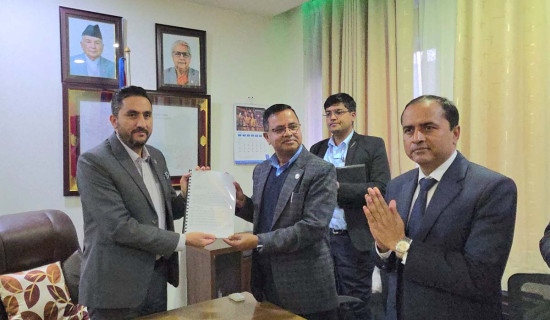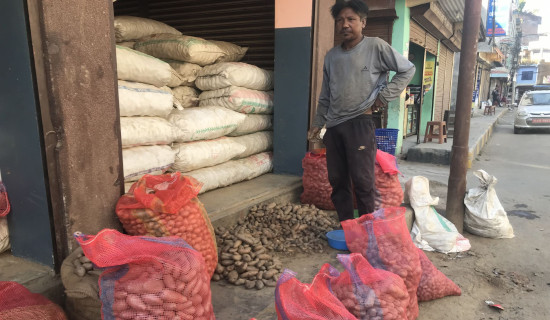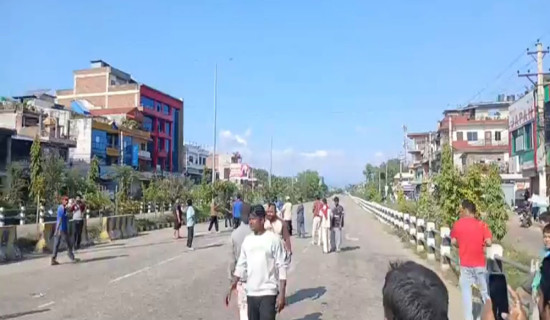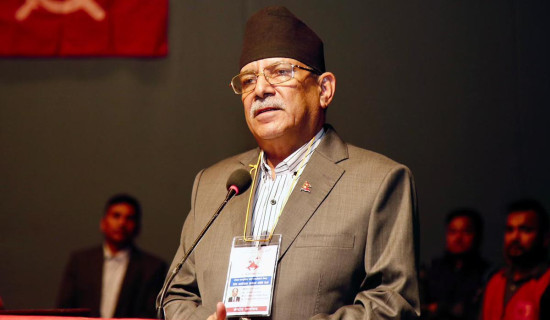- Thursday, 20 November 2025
Chhath: Festival Of Cleanliness, Purity And Devotion
As a grand event that is largely attended by married women and marks the complete submission of devotees before the Chhathi Maiya, the Chhath festival – which is linked to faith, purity, and devotion to the sun god – has evolved into a Mahaparva. The festival is observed on the sixth day of the month of Kartik. Nonetheless, the term ‘Chhath’ originally meant "sixth" in ancient Prakrit, as the festival is observed twice a year on the sixth lunar day of the Hindu calendar months of Kartik and Chaitra. Typically, the Chhath celebration starts six days following the festival of lights, Dipawali.
Hindu Scriptures
The Vedas refer to Usha as Chhathi Maiya, the wife of the sun god. Though Chhath is a solar festival, it has historically and socially been associated with women since Chhathi Mai is believed to be the goddess of children's protection, assuring them longevity and good health. The Mahabharata and the Ramayana are particularly relevant here. After their 14-year exile, Lord Rama and Mata Janaki (Sita) kept a fast in praise of the sun god, Surya Dev, and only broke it at first light the next day. Karna, the son of Surya Dev and Kunti, is described in the Mahabharata as offering prayers while standing in water and giving Prasad to devotees, Rishis, and other people. Another myth is about how Draupadi and the Pandavas worshipped in a similar way to overthrow the Kauravas.
Rituals
For four days, the devotees carry out significant rites and offer their heartfelt thanks to Lord Surya. The celebration encourages community members to be clean, egalitarian, socialist, and brotherly. At the start of the Chhath Puja, called “Nahay Khay”, devotees take a pledge to abstain from onion, garlic, hotel-prepared meals, and other non-vegetarian items until the end of the celebration in order to maintain their purity and sublimeness. This vow is called a declaration of “Machh-maruwa Barnai”. In general, it is believed that the puja starts from “Nahay Khay”. But, it’s only partially true. The Puja commences from “Machh-maruwa Barnai, i.e., a day before “Nahay Khay”. On this day, the devotees take food prepared in their own kitchen after taking bath and offering prayers to sun god.
The Kharna is the second day. The devotees take fast till the conclusion of Kharna in the evening. Kheer made up of rice, milk and Gund (Jaggery) and Puri are offered to the god and distributed among the family members later in evening (after sunset). The third day is called Saunjh ka Arghya (evening offering), often called Pahila Arghya. We are celebrating the first offering on November 19 this year. This day is considered to be the toughest day for the devotees, who are mostly women. They observe a rigid fast where they neither take water nor any food item. They take dips in the waters, mostly neighbourhood ponds or rivers, in the evening and it goes till the sunset. They offer prayers to sun god with all the fruits and Prasad prepared in their own but separate kitchen, like Thakuwa, Bhuswa, Khaja, Mithae and other fruits, including grapefruit, sugarcane and banana.
The offerings, which consist of coconuts, turmeric roots, and green veggies like carrots, sweet potatoes, and radishes that are cultivated in the ground, are preserved in a bamboo stick-made "Sup" (winnow). Furthermore, the offerings are also stored in earthenware vessels. At the ghat (bank of rivers or streams), ladies smear vermillion on the forehead of another woman. It’s considered to be auspicious to do so. It is a widely held notion that women paint long yellow vermillion from their heads to their noses in an attempt to impress Chhathi Maiya and ask for her blessings for her children’s and husband's long life and the wealth of her entire family. On the Bhor ka Arghya (morning offering), the fourth and final day, devotees break their fast after offering prayers to the rising sun. They take dip in waters and offer every Prasad to the god again. This way, the devotees take fast without consuming a single drop of water, or other foods for more than 36 hours (beginning from Saunjh ka Arghya to the Bhor Ka Arghya).
Festival of submission, equality
The celebration is associated with the devotion and sacrifice of female devotees. The rigorous fasting demonstrates how women prioritise their husbands, kids, and families above everything else in our part of the world. Offering 70 varieties of handmade dishes and fruits has been in practise. It does, however, have a few exceptions. A devotee must provide "Gamhari" rice, which is only grown in the Terai, if they are unable to present all 70 different kinds of food. This celebration calls for clean, green waters free of pollutants, aiming to bring people together in the battle against environmental hazards.
The festival serves to strengthen the ties of equality, fraternity, togetherness, and integrity. Every devotee, regardless of class, colour, or economic status, makes nearly identical Prasad and other offerings for the almighty, and all assemble at the ghat to offer prayers. In this regard, the celebration encourages brotherhood and equality. Maybe this is only festival that goes without necessity of male priests and utterance of Sanskrit mantras. However, on the final day, Bhorka Arghya, a woman devotee at the ghat recites a story of how Chhatha puja began and became a part of festivity among its devotees. It’s high time for us to acknowledge the messages of Chhath and stand against pollution and other acts that tend to frustrate equality, fraternity and purity.
(Jha is currently a Judicial Officer, at Supreme Court . jhajivesh@gmail.com)
















